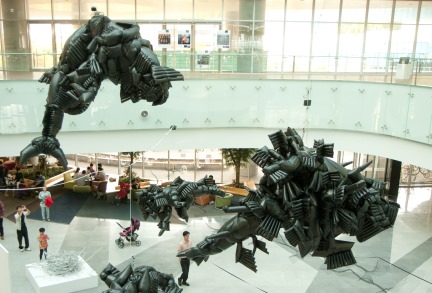On October 10, the second Science and Humanity Muses Project, “Life is Very Beautiful,” was held on the first and second floors of the KAIST Institute (KI) Building (E4). Organized by the KAIST Art and Design Council and directed by Professor Junghwa Kim from the Graduate School of Culture Technology, the exhibition will run until December 6.
At the vernissage, which was held at 2 p.m. on the first day of the exhibition, many students and faculties of KAIST, including President Sung Mo Kang, participated and had the chance to listen to brief presentations of the artists’ works.

The exhibition started last year as part of the KAIST Science and Humanity Muses Project to promote the active exchange between science and art. Through this consilience of art and science, the KAIST Art and Design Council aims to provide opportunities to expand students’ views on society.
This year’s exhibition, under the theme “Life is Very Beautiful,” is about biodiversity and the symbiotic network among species. It aims to show the theme of life in science and humanities from artistic perspectives. The exhibition consists of six different sub-topics: zoology, botany, microbiology, humanities, virtual ecosystem, and archive of science of humanities. The exhibition includes works of 29 artists, which are displayed on the first and second floors of the KI Building. The artworks include the Byungchan Lee’s Urban Creature Lafuta, which is displayed at the center of the KI building, and Jinah Roh’s Inanimate Organism.
Myung-Suk Kim, the head of the KAIST Art and Design Council, said, “Scientists’ efforts to explore the mystery of life and artists’ efforts to express the beauty of life will give us the opportunities for self-realization and self-examination.”
The exhibition is open to all members of KAIST community as well as outsiders. For more information, contact the KAIST Art and Design Council.
Sang Eun Jee
eunicejee@hotmail.com

